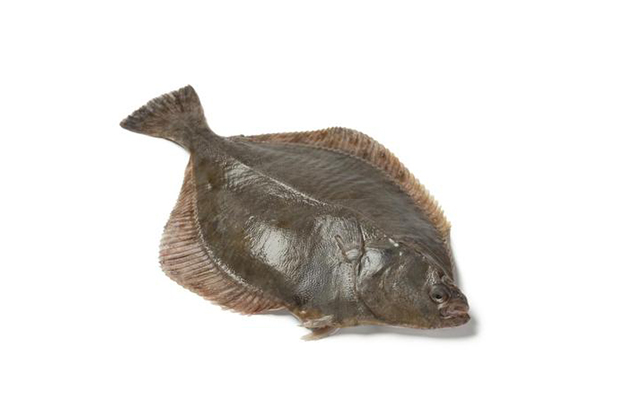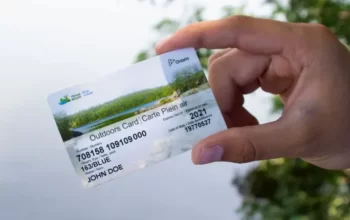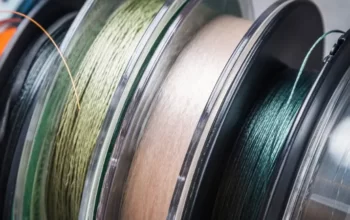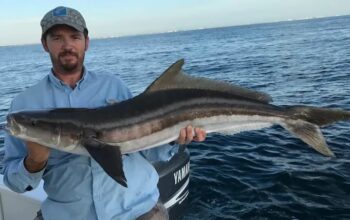How can I catch flounder? Along the Atlantic coastline, flounder can be found in coastal estuaries and on ocean floors. The key to catching flounder is to move alluring live bait across their path while you wait for them to strike. Flounder like to camouflage themselves and ambush their prey. You will receive a delicate, flaky, and delectable seafood meal as payment for landing a flounder. To learn how to begin, please see the section below the jump.
All the information you require about catching and pursuing flounder (fluke) will be covered in this article. We will start by discussing the biological characteristics of a flounder (fluke) in order to better understand these fish.
After delving into the specifics of flounder, we’ll take a closer look at where they can be found and how to use live, cut, and artificial baits to catch them.
Table of Contents
Flounder Fish – What Are They?
The families Achiropsettidae, Bothidae, Pleuronectidae, Paralichthyidae, and Samaridae are just a few of the many families that flounder may belong to under the suborder Pleuronectoidei. Anglers in the Mid-Atlantic, however, only have to worry about summer flounder, which is a member of the Paralichthyidae family. Flounder primarily inhabit estuaries and coastal waters along the Atlantic and Gulf coasts, excluding our region. Between Nova Scotia and the east coast of Florida, they can be found in the Atlantic Ocean’s inshore and offshore waters.
Like the majority of flatfish, flounder have that recognizable odd appearance. Flounders migrate their eyes so that both are on the side of their body that faces up because they swim on their side along the ground and are flat, as is obvious. A fun nickname for flounder that refers to their ability to blend in with their surroundings is “chameleons of the sea.” All species are covered in eye-like spots and have brown bodies with white bellies (the side that faces downward). The way the spots look and which side the eyes form differ, however, depending on the species. Summer flounder are always left-side up and have 10 to 14 large spots. Be careful; flounders in the Paralichthyidae family are known for having very sharp teeth.
Flounder Biology
- Between three and six pounds is the typical weight of summer flounder. Typically, a flounder’s width is equal to half of their length.
- Summer flounder are between 15 and 22 inches long on average.
- The lifespan of a flounder is roughly 12 to 14 years.
- About two to three years pass before they become sexually mature.
Record Flounder
Setting a flounder record is best done in the Mid-Atlantic. The 24.3 pound largest summer flounder ever caught was caught by Monica Oswald in 2007 off the coast of New Jersey, but she was disqualified from setting a record because she violated IGFA rules by resting the rod against the boat’s gunwales. The following list contains data for the Mid-Atlantic states that FishTalk covers:
Delaware – In Indian River Inlet, William Kendall caught a flounder that weighed 17 pounds, 15 ounces in 1974.
Maryland – The record-holder is Kenneth Grimes, who was caught by Buoy 50 in 1978 and weighed 15 pounds.
Virginia – When fishing in the Baltimore Channel in 1971, Charles E. Cross set the record at 17 pounds, 8 ounces.
When Is The Best Time To Catch Flounder?
There are seasonal “runs” of fish throughout the flounder’s coastal range, meaning that large schools of the species enter and disperse across coastal regions throughout the seasons. Such “runs,” or migrations, of flounder are influenced by a variety of factors, including spawning preferences, water quality and temperature, the availability of bait, and species abundance.
Flounder runs can be extremely localized, lean, or huge in some years. For instance, South Carolina may have a poor run of Summer Flounder that year while Southeast Georgia is experiencing a great run. Additionally, different flounder subspecies can coexist. For instance, anglers may catch Summer Flounder at the same time and location as Southern or Gulf flounder. It will be possible to determine when these local runs take place by keeping an eye on these patterns and migrations, asking at nearby tackle shops, and generally monitoring catches.
Where to look for them and how to catch flounder once fish runs are active are the most crucial factors for the average angler looking to catch a few flatfish for a tasty dinner.
Which Place Can I Find Flunder?
Although there is plenty of fishing in shallow waters, between 10 and 25 miles offshore, wrecks and reefs are frequently where you’ll find the truly record-breaking doormats. Although you need an ocean-worthy boat (or to board a party boat) and there are many snags, currents, and winds to contend with, this type of fishing can be challenging for beginners.
In coastal bays, flounder are frequently found in very shallow waters, sometimes only a foot or two deep, in the early spring. However, once warm weather arrives, the majority of fishermen who fish in bay and inlet waters find flounder in depths between five and thirty feet. Following a drift that will take you over a sharp drop-off is the best way to determine the proper depth. You can settle down and put more effort into your fishing once you’ve had a few bites and have a good idea of the depth at which the flounder are congregating. Wherever you are, it’s helpful to modify the target depth in accordance with the tide. When the tide is high, flounder are more likely to be found in shallower waters. In deeper waters, such as channels, at low tide, flounder move.
Best Bait To Catch Flounder
Here are the top choices that fishermen make when fishing for flounder as bait:
- A fantastic combination of bait for a novice is the “minnow/squid sandwich.” Put a minnow on the hook after cutting squid strips into a “V” shape.
- For fall fishing, use live finger mullet as large as possible (for the truly enormous fluke).
- Live spot
- Live peanut bunker (menhaden)
- Shrimp
Best Rigs And Tackle For Flounder
You’ll need the following rigs and equipment for bait fishing:
- Fluke-killing fishing gear, such as that produced by Sea Striker, Fin Striker, Bay Park, or Aqua Clear.
- Heavy equipment is needed for fishing close to reefs and wrecks. Utilize four to eight ounces of weight and 3/0 to 5/0 hooks rigged on a 30-pound leader material over three feet long.
- Double bottom rig for drift fishing with a baited head or bucktail, consisting of a top hook leader that is eight inches long, a bottom hook leader that is between 24 and 30 inches long, and a head or bucktail that is heavier (two to five ounces) and weighs between 1/4 and/8 of an ounce. Use a double uni-knot to secure fluorocarbon in the 15 to 20 pound test range to the braided running line.
- spinning or conventional rods and reels in the 15 to 30 pound range.
Best Fishing Lures For Flounder
These will serve the purpose for those who use lures.
- Jigs with a four to six-inch soft plastic body and a weight of between a half and two ounces.
- Berkley GULP! in five or six inches! Mullet swimming in soft plastic.
- Bucktails – white or chartreuse double-bucktail rigs, with or without plastic tails and/or bait, both work well.
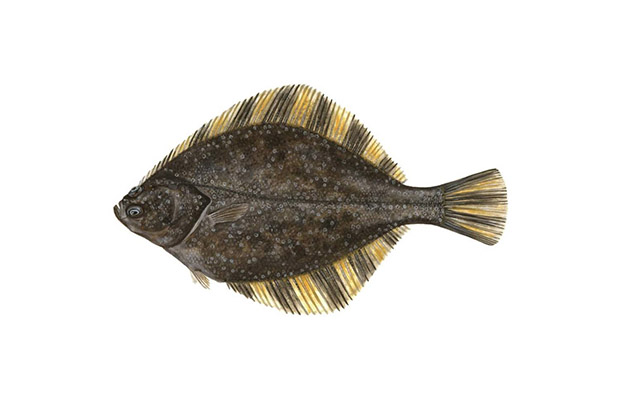
How To Catch Flounder (fluke) Using Artificial Lures?
The best flounder (fluke) fishermen love using artificial lures because they are so effective at reducing the number of bothersome bait stealers. To be able to adjust to changing fishing conditions, it’s crucial to keep a variety of baits in your arsenal of artificial lures when you go flounder (fluke) fishing. When getting ready to use artificial lures to catch flounder (fluke), you must have buck tail jigs, spoons, and curly tail grubs.
The most well-known scent-based artificial bait for flounder (fluke) fishing is probably the Gulp shrimp, but other scent-based paddle tails or jerk baits can also be effective. A jig head or weighted weedless hook with a long leader of 20–30 pounds of fluorocarbon is a good starting rig.
For your leader selection when pursuing flounder, we strongly advise looking at our Infinity 100% Fluorocarbon Leader. Many flounder (fluke) anglers hold the opinion and advocate that the most productive retrieval for this kind of rig is a slow and steady presentation, dragged or hopped along the bottom.
Fluke (flounder) have a propensity to spit the hook at the boat, as many anglers who have caught them have discovered. In order to prevent this, reel slowly and maintain a tight line after you feel the bite. After waiting 5 to 10 seconds, set the hook. Maintaining a tight line and being patient will ensure a proper hook set and put an end to those heartbreaking moments because flounder (fluke) tend to chomp on their prey before returning to it to finish it off.
Following that, we’ll demonstrate how to use live bait to catch flounder (fluke).
How To Use Live Bait To Catch Flounder (fluke)?
For many fluke (flounder) fishermen across the nation, live bait is crucial and can be very successful when pursuing finicky fluke (flounder). Live bait options include shrimp, crabs, smaller flounder, sardines, shad, mullet, and mud minnows.
Free Lining
When fishing in areas with strong current and fish that are actively feeding, free-lining baits or employing a float can also be successful strategies. A 1/4 ounce jig head at the end of a 2-3 foot fluorocarbon leader is a great starting rig when fishing with live shrimp. We will then discuss using cut bait to catch flounder (fluke).
Carolina Rig
What many anglers across the country refer to as a Carolina rig is one of the most well-liked live bait rigs for flounder. In accordance with the depth and current you are fishing in, select a weight between 1/8 and 1 ounce, and attach it to the main line. A swivel, a leader, and a small circle hook should then be tied on. The leader should be between 2 and 4 feet long.
How To Use Cut Bait For Flounder (fluke) Fishing?
Cut bait is regarded by many dedicated flounder (fluke) anglers as a necessity when going after flatties. Because cut baits emit a lot of scent, flounder (fluke) anglers frequently use them. Additionally, cut bait is typically accessible all year long and can be used either fresh or frozen.
Depending on the area you live in, cut mullet, herring, and sardines can be very effective. Depending on the water depth and current in the area you choose to target, cut baits should generally range in length from 3 to 6 inches and can be rigged using a knocker or Carolina rig with weight selection.
A lot of fishermen will start by using one cut bait and one live or artificial bait, and they’ll change their rigs depending on what the flounder (fluke) are biting on.
The next topic we’ll cover is how to catch flounder (fluke) near structures.
How Do You Catch Flounder (fluke) On The Flats?
On the flats, flounder (fluke) fishing is popular and can be very successful under the right circumstances. Potholes, transitional areas on the bottom, and flounder (fluke) tracks are a few things to search for when pursuing flounder (fluke) on the flats.
Try to get out and wade these areas when you can, whether you own a boat or not. Gaining a better understanding of the bottom’s composition and being able to identify slight drop-offs and changes will be made easier with direct access to the bottom.
On flats all over the country, potholes serve as important flounder (fluke) ambush points. To see these potholes through the water’s glare, it’s essential to wear a good pair of polarized sunglasses. Look for lighter color changes on the ground to identify potholes, then slowly and steadily present your casting motion across the area. Transitions on flats can take many different forms. For instance, a simple transition from a mud to a sand bottom can be a great place for flounder (fluke) to lay her eggs because these areas tend to draw baitfish and other kinds of prey.
Inshore ledges, a small drop off of 6 inches in the bottom, are another example of transitions on the bottom and can be a great place to find flounder. Last but not least, keep an eye out for flounder (fluke) tracks. At low tides, you may see circular imprints on the bottom; these are places where flounder (fluke) have buried themselves and then relocated due to the receding water level. Remembering the location of these tracks is crucial so that you can cast there during a higher tide. Next, we’ll share some expert advice on how to catch flounder (fluke).
How Can Flounder (fluke) Be Caught Near Structures?
As we’ve already mentioned, flounder (fluke) like to lay in wait for prey on docks, piers, rocks, and pilings. They can accommodate several fish and offer protection from predators like dolphins, sharks, and bigger fish.
Always use a little bit heavier tackle when flounder (fluke) fishing near structures. This entails sizing up the fluorocarbon leader and possibly using heavier rods and reels to prevent rubbing against the structure and the potential for line breakage.
A flounder (fluke) will probably not leave your bait alone until he has eaten it once he finds it. When you feel the first bite, one method employed by many expert flounder (fluke) anglers is to begin slowly reeling. By doing this, you can get the flounder (fluke) to emerge from the structure before setting the hook.
Breaks or eddies in the current are the next thing to look for when pursuing flounder (fluke) near structures. Casting in these current breaks around structures is essential because flounder will sit down current behind structures to conserve energy and ambush prey.
Conclusion
Keep in mind that most anglers use slightly lighter tackle in the 10- to 20-pound range when fishing lures.
Are you prepared to enter the water and attempt to catch some flounder now? We certainly hope so, and when you’re ready to broaden your fishing horizons even further, check out the entire collection of articles on our website in the “Fishing For Beginners” series.

